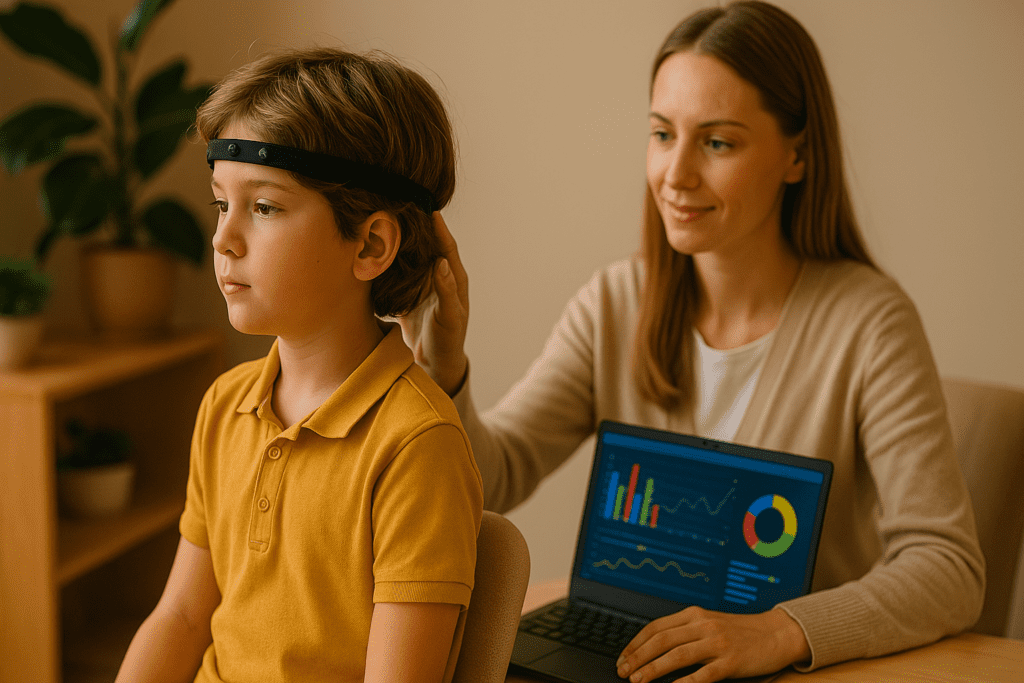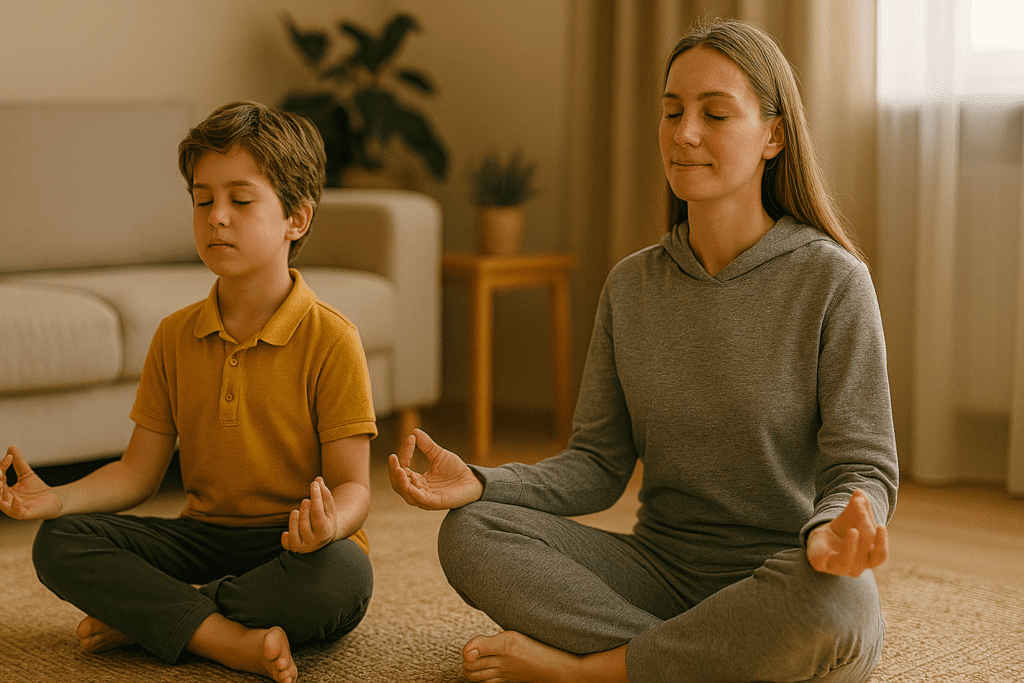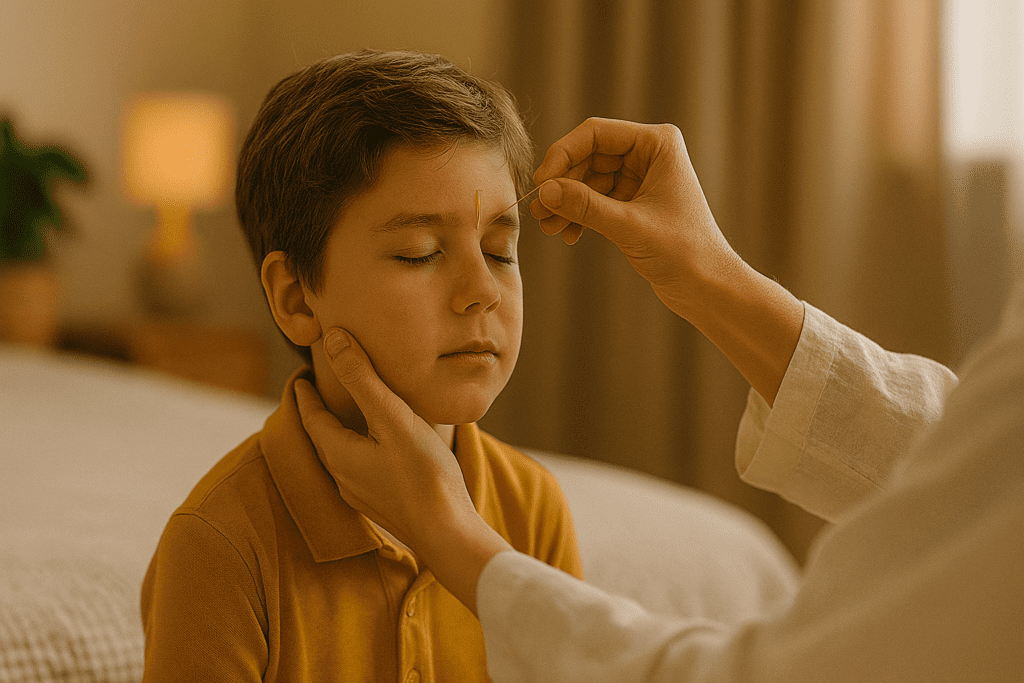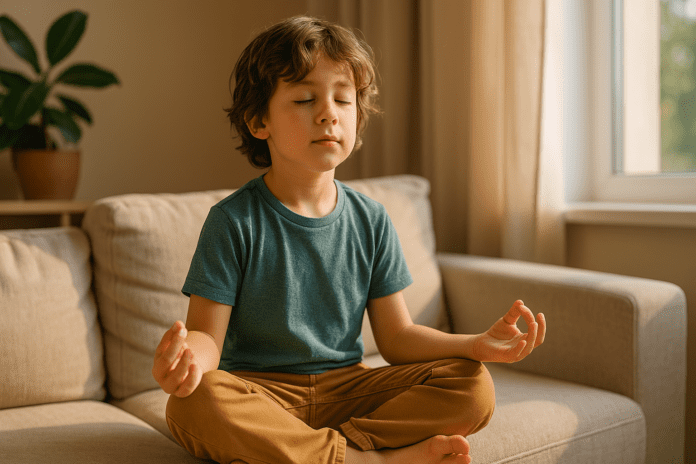Attention-deficit/hyperactivity disorder (ADHD) is a complex neurodevelopmental condition that affects millions of children worldwide. Characterized by symptoms such as inattention, impulsivity, and hyperactivity, ADHD can interfere with academic performance, social interactions, and emotional regulation. While conventional medications like stimulants have long been the cornerstone of treatment, concerns over side effects and long-term impacts have prompted a growing interest in alternative therapy for ADHD. For many parents and caregivers, exploring holistic and evidence-based approaches offers a path toward supporting their child’s focus and cognitive development without solely relying on pharmaceuticals.
You may also like: How to Improve Focus and Concentration: Proven Techniques for Boosting Mental Clarity and Productivity
The movement toward natural remedies for ADHD in children is not just a trend—it reflects a broader shift in how we understand the interplay between mental health, lifestyle, and long-term brain health. As science continues to uncover the impact of diet, sleep, movement, and emotional connection on the developing brain, parents are increasingly seeking alternative ADHD treatment methods that align with whole-child wellness. This comprehensive article explores a variety of ADHD alternative medicine strategies, highlighting what works, what shows promise, and how to help a child with ADHD without medication using a holistic, individualized approach.
Understanding ADHD Beyond the Surface
To understand the value of alternative treatments for ADD and ADHD, it’s essential to appreciate the complexity of the disorder itself. ADHD is not simply a behavioral issue; it is rooted in neurobiological differences, often involving dysregulation of neurotransmitters like dopamine and norepinephrine. Children with ADHD may exhibit symptoms that vary in type and intensity, and these symptoms can change depending on environment, emotional state, or stress levels.
Traditional medications, such as methylphenidate or amphetamine-based stimulants, target these neurotransmitter imbalances, often improving symptoms in the short term. However, these medications can come with side effects such as appetite suppression, insomnia, and increased anxiety. Some children do not respond well to stimulants at all. In these cases, many families begin to consider alternative therapy for ADHD—not to reject medicine altogether, but to seek a more integrative solution that supports long-term well-being.
The Role of Diet and Nutrition in ADHD Management
Among the most widely researched natural remedies for ADHD in children is the role of nutrition. Emerging evidence suggests that dietary interventions may influence attention, mood, and impulse control. For instance, children with ADHD often show deficiencies in key nutrients such as omega-3 fatty acids, zinc, magnesium, and iron. These nutrients are vital for optimal brain function, and supplementation may yield modest yet meaningful improvements in symptom control.
An anti-inflammatory diet rich in whole foods, leafy greens, lean proteins, and healthy fats can be a foundational component of a holistic ADHD treatment for kids. Reducing processed foods, artificial food dyes, and added sugars has also been linked to behavioral improvements. While the evidence is still evolving, many parents report positive outcomes when adopting a cleaner, brain-focused eating plan. In this context, nutrition serves not only as an intervention but as a daily reinforcement of cognitive health and resilience.

Integrating Movement and Physical Activity
Physical activity is a potent tool for children with ADHD. Exercise helps regulate neurotransmitters, improve mood, and enhance executive functioning skills like planning and impulse control. Regular movement is one of the most accessible and underutilized alternative treatments for ADD.
From organized sports to nature walks and unstructured play, incorporating movement into a child’s routine offers both immediate and cumulative benefits. Children who engage in consistent physical activity often experience better sleep, improved attention spans, and reduced hyperactivity. These outcomes underscore the role of movement as a sustainable, natural ADHD remedy for kids.
In school settings, movement breaks and kinesthetic learning approaches can help children with ADHD remain engaged. The goal isn’t to punish fidgeting but to understand it as a physiological need. When used as part of a broader strategy, physical activity becomes a cornerstone of how to help a child with ADHD without medication, offering both short-term behavioral regulation and long-term brain benefits.
Mindfulness, Meditation, and Emotional Regulation
Emotional self-regulation is often a challenge for children with ADHD, making them more susceptible to outbursts, frustration, or anxiety. Mindfulness-based practices offer powerful tools for building inner awareness and emotional control. In fact, research has demonstrated that mindfulness can help improve attention span, reduce impulsivity, and enhance emotional resilience.
Children can learn mindfulness through age-appropriate exercises such as guided imagery, deep breathing, or simple meditation practices. When integrated into daily routines, these practices help calm the nervous system and support neuroplasticity—the brain’s ability to rewire itself through experience. For many families, this represents a transformative form of ADHD alternative medicine that empowers children to participate actively in their own mental health.
Parents can model mindfulness at home, creating a shared experience that supports bonding and emotional safety. While mindfulness is not a quick fix, its long-term impact on stress reduction and cognitive flexibility makes it one of the most promising alternative ADHD treatment strategies available today.
Sleep Hygiene and Its Influence on Attention
Sleep is foundational to brain health, yet many children with ADHD struggle with falling asleep, staying asleep, or achieving restorative rest. Poor sleep exacerbates core ADHD symptoms, including irritability, impulsivity, and inattention. Addressing sleep hygiene is therefore a crucial component of holistic ADHD treatment for kids.
Simple interventions—such as establishing a consistent bedtime routine, reducing screen time in the evening, and creating a dark, quiet sleep environment—can significantly improve sleep quality. Herbal natural remedies to calm a hyper child, such as chamomile tea or lavender aromatherapy, may also support relaxation when used appropriately.
While melatonin supplements are sometimes recommended, it’s important to consult with a healthcare provider before initiating any sleep aid. Long-term reliance on supplements without addressing behavioral patterns may not offer lasting results. Instead, focusing on natural ways to calm a hyper child before bedtime can build healthier sleep habits and reinforce the body’s natural circadian rhythms.
The Role of Nature and Outdoor Exposure
Spending time in nature has been shown to have a calming effect on children with ADHD. Time outdoors can lower cortisol levels, reduce anxiety, and enhance mood. Whether it’s a walk in the woods, gardening, or simply unstructured outdoor play, nature exposure supports focus and well-being in profound ways.
The concept of “green time” has gained traction as a natural ADHD remedy for kids. Some studies suggest that children who spend more time in natural environments show fewer ADHD symptoms compared to those in more urban or screen-heavy settings. This may be due to nature’s ability to engage attention in a gentle, non-overstimulating way.
Incorporating daily outdoor time doesn’t require elaborate trips or expensive gear. Even 20 to 30 minutes of outdoor activity can yield noticeable benefits. For parents seeking alternative ADHD treatment strategies that are low-cost, low-risk, and evidence-aligned, nature may offer one of the most accessible solutions available.
Occupational Therapy and Sensory Integration
Occupational therapy (OT) is another effective alternative therapy for ADHD that addresses the sensory and motor challenges often associated with the condition. Children with ADHD may have difficulty processing sensory input, leading to overstimulation or, conversely, sensory-seeking behaviors.
An OT evaluation can help identify specific sensory processing issues and tailor a plan to support regulation. Sensory integration techniques, such as weighted blankets, fidget tools, or sensory diets, may help children stay focused and calm. These tools can be especially beneficial in school settings, where overstimulation often leads to disruptive behavior.
While OT is a professional therapy, many of its strategies can be carried over into the home with guidance. Parents and caregivers who understand their child’s sensory profile are better equipped to create environments that reduce stress and promote learning. As such, occupational therapy represents a bridge between medical treatment and practical daily support, embodying the goals of holistic ADHD treatment for kids.
Homeopathy, Herbal Supplements, and Caution
Some parents explore herbal natural remedies to calm a hyper child, such as valerian root, passionflower, or ginkgo biloba. While these herbs have long histories in traditional medicine, their use in children requires caution, appropriate dosing, and consultation with a qualified practitioner.
Not all herbal supplements are safe or effective, and the lack of regulation in the supplement industry means that quality can vary widely. However, when used judiciously and with medical oversight, certain herbal remedies may serve as adjuncts to a broader ADHD alternative medicine strategy.
Homeopathy is another alternative ADHD treatment that some families consider. While the evidence base for homeopathy remains limited, anecdotal reports suggest that individualized homeopathic protocols may offer behavioral improvements in select cases. The key is to approach these therapies as part of a multi-layered support system, not as stand-alone cures.
Behavioral Coaching and Parental Support
Parents are integral to the success of any ADHD treatment plan. Behavioral coaching provides parents with strategies for managing challenging behaviors, reinforcing positive habits, and improving communication with their child. This type of support is especially helpful when parents are committed to understanding how to help a child with ADHD without medication.
Behavioral coaching often focuses on building routines, using positive reinforcement, and setting consistent expectations. It may also involve identifying triggers and developing proactive strategies for stress management. With time, these techniques can foster greater self-awareness in the child and reduce oppositional behaviors.
Importantly, coaching can also address parental stress and burnout—an often-overlooked element of ADHD management. By empowering parents, coaching enhances the overall family dynamic and contributes to long-term emotional and cognitive stability for the child. This aligns closely with the objectives of natural remedies for ADHD in children, which prioritize sustainable well-being over symptom suppression.

Educational Strategies and School Collaboration
Children with ADHD spend a significant portion of their time in educational settings, making school collaboration a vital component of effective care. Alternative treatments for ADD often include modifications to the learning environment, such as preferential seating, reduced homework load, or access to quiet workspaces.
Individualized Education Programs (IEPs) and 504 plans can help ensure that a child’s needs are met without stigma or exclusion. Teachers who understand the principles of ADHD alternative medicine are better equipped to recognize signs of overstimulation and adapt their approach accordingly.
Innovative educational strategies such as multisensory instruction, frequent movement breaks, and project-based learning may also enhance engagement. When schools partner with families in the spirit of holistic support, children experience fewer barriers to learning and more opportunities to thrive.
Neurofeedback and Brain-Training Technologies
Neurofeedback is a promising but still-developing intervention that falls under the category of alternative therapy for ADHD. This non-invasive technique uses real-time monitoring of brain waves to help individuals learn to regulate their own brain activity. Over time, neurofeedback may lead to improvements in focus, impulse control, and emotional regulation.
Though more research is needed, preliminary studies suggest that neurofeedback can be especially effective when integrated with other holistic strategies. It represents one of the more technology-driven options in the landscape of alternative ADHD treatment, offering a unique blend of neuroscience and personal empowerment.
Parents interested in neurofeedback should seek out providers with experience in pediatric populations and evidence-based protocols. As with any alternative approach, it’s essential to weigh benefits, risks, and costs before making a commitment. When used thoughtfully, neurofeedback can complement natural ways to calm a hyper child while reinforcing the brain’s inherent adaptability.

Frequently Asked Questions (FAQ): Alternative Therapy for ADHD in Children
1. Can diet alone be an effective natural ADHD remedy for kids?
While diet alone is unlikely to replace a comprehensive ADHD treatment plan, it can significantly support brain health and behavior regulation. For some children, removing artificial dyes, preservatives, and processed sugars leads to noticeable behavioral improvements. Specific nutrients like omega-3 fatty acids, iron, and zinc have been shown to support neurotransmitter balance and cognitive function, making them useful components of natural remedies for ADHD in children. However, dietary changes work best when integrated into a broader holistic ADHD treatment for kids. Ongoing guidance from a pediatric nutritionist can help ensure that changes are evidence-based and tailored to each child’s needs.
2. What role does gut health play in ADHD, and are probiotics useful in alternative ADHD treatment?
Emerging research suggests that gut health may influence symptoms of ADHD through the gut-brain axis—a communication network between the digestive system and the brain. Disruptions in gut microbiota have been linked to increased inflammation and neurotransmitter dysregulation. Probiotics and prebiotics may help restore microbial balance, and some parents have observed improved mood and focus after incorporating them into their child’s routine. While not a standalone solution, they can enhance the effectiveness of alternative treatments for ADD when used in conjunction with dietary and behavioral interventions. As with any intervention, consult a healthcare provider before adding supplements to a child’s regimen.
3. Are there any risks associated with herbal natural remedies to calm a hyper child?
Yes, despite their natural origins, herbal supplements are not automatically safe or risk-free, especially for children. Certain herbs like valerian root or passionflower may interact with other medications or cause sedation, stomach upset, or allergic reactions. It’s essential to seek professional guidance before using herbal natural remedies to calm a hyper child, particularly when considering dosage and quality of the product. A trained naturopath or integrative pediatrician can help determine whether a specific herb fits within a broader ADHD alternative medicine approach. Monitoring for side effects and using standardized, high-quality products is key to maximizing safety.
4. How can parents apply alternative ADHD treatment strategies in everyday routines without overwhelming themselves?
Start with small, sustainable changes—such as implementing a consistent bedtime or introducing a five-minute mindfulness exercise after school. Over time, these foundational practices can evolve into more structured routines that reinforce focus and emotional regulation. The key to applying alternative therapy for ADHD effectively is to prioritize consistency over complexity. Natural ways to calm a hyper child don’t need to be elaborate; they can be as simple as a walk outside, dimming the lights before bed, or using calming music during homework. It’s also crucial for parents to practice self-care and seek support, as their well-being directly influences their child’s progress.
5. Is neurofeedback a scientifically supported alternative therapy for ADHD?
Neurofeedback has shown promising results in small studies and clinical settings, with some children demonstrating improved attention, reduced impulsivity, and enhanced self-regulation. It works by training individuals to alter their brainwave activity using real-time feedback. While it is gaining popularity as part of holistic ADHD treatment for kids, more large-scale, randomized controlled trials are needed to solidify its standing as mainstream care. Nevertheless, neurofeedback is considered a viable component of ADHD alternative medicine when provided by trained clinicians and combined with behavioral and lifestyle interventions. Parents should weigh the cost, time commitment, and available evidence before investing in this therapy.
6. How can schools support alternative treatments for ADD without compromising academic expectations?
Schools can play a pivotal role by offering flexible learning environments and individualized accommodations, such as movement breaks or reduced homework loads. These adjustments align with the goals of alternative treatments for ADD by reducing overstimulation and promoting executive function development. Educators trained in neurodiverse learning strategies are better equipped to support children using ADHD alternative medicine approaches. Collaborating with teachers and school counselors can help ensure that natural ADHD remedy for kids strategies are consistently applied across settings. The goal is not to lower expectations but to create equitable conditions for children with different cognitive profiles.
7. What are some overlooked natural ways to calm a hyper child during high-stress moments?
In high-stress moments, children often benefit from sensory grounding techniques such as squeezing a textured object, engaging in rhythmic breathing, or using essential oils with calming properties. These techniques can serve as immediate, in-the-moment natural ways to calm a hyper child. Less conventional options include tapping (emotional freedom technique), acoustic stimulation through binaural beats, or even creative expression via art or storytelling. Each of these methods contributes to a child’s emotional regulation toolkit, supporting long-term outcomes aligned with holistic ADHD treatment for kids. As always, effectiveness varies by child, and experimentation within safe boundaries is often necessary.
8. How can parents evaluate whether an alternative ADHD treatment is truly effective?
Measuring progress in alternative therapy for ADHD requires both objective tracking and subjective observation. Parents can maintain a daily or weekly log that notes changes in attention span, sleep quality, mood, and social behavior. This helps identify patterns and determine whether a specific ADHD alternative medicine strategy is yielding benefits. It’s important to set realistic goals and understand that improvements may be gradual and multifactorial. Seeking input from teachers or therapists can provide external perspectives, making the evaluation process more robust. Remember, success in alternative treatments for ADD is not always about eliminating symptoms but enhancing daily functioning and quality of life.
9. Are there long-term cognitive benefits associated with holistic ADHD treatment for kids?
When applied consistently and thoughtfully, holistic approaches can support brain development in lasting ways. Activities like mindfulness, physical movement, and healthy sleep habits stimulate neuroplasticity, which enhances cognitive flexibility, memory, and emotional regulation. These long-term benefits make holistic ADHD treatment for kids particularly appealing for families focused on sustainable well-being rather than short-term symptom suppression. Over time, children often develop greater self-awareness and executive functioning skills, which can reduce the need for more intensive interventions later in life. This comprehensive development aligns closely with the goals of natural remedies for ADHD in children.
10. Can ADHD alternative medicine approaches also benefit neurotypical siblings or family dynamics?
Absolutely. Many strategies that are considered alternative ADHD treatment—such as reducing sugar intake, practicing mindfulness, or establishing predictable routines—are beneficial for all children, not just those with ADHD. Implementing these approaches family-wide often reduces resentment or feelings of exclusion among neurotypical siblings. It also improves overall household dynamics by promoting consistency and emotional regulation for everyone. In this way, exploring natural ADHD remedy for kids can have ripple effects that enhance family resilience and cohesion. A shared commitment to well-being makes it easier to sustain long-term changes that benefit both children and parents alike
Conclusion Reflecting on Holistic ADHD Treatment and Brain Health Over Time
Choosing alternative therapy for ADHD is not about rejecting conventional medicine but about expanding the toolkit available to support a child’s growth, learning, and joy. Holistic ADHD treatment for kids centers on the belief that every child is more than their diagnosis—that they are whole individuals whose strengths can be nurtured through supportive environments, mindful care, and evidence-informed interventions.
From natural remedies for ADHD in children to structured behavioral supports and emerging neurotechnologies, the landscape of alternative ADHD treatment is rich and varied. What unites these approaches is a commitment to viewing the child through a lens of possibility rather than pathology. When families, educators, and healthcare providers work collaboratively, they create a system that honors the child’s needs while promoting long-term brain health.
As we continue to learn more about the science of attention, self-regulation, and brain development, the future of ADHD care looks increasingly integrative. Whether through herbal natural remedies to calm a hyper child, behavioral coaching, or outdoor play, these strategies offer parents meaningful pathways for how to help a child with ADHD without medication. And in doing so, they support not just symptom management but the flourishing of each child’s full potential.
child behavior strategies, integrative pediatric care, natural focus boosters, brain development in children, calming techniques for kids, cognitive support for children, non-drug ADHD approaches, emotional regulation in childhood, mindfulness practices for kids, child-friendly herbal supplements, behavioral therapy for children, managing childhood hyperactivity, supporting executive function, child nutrition for brain health, sensory processing and ADHD, focus improvement in children, natural cognitive enhancers, sleep and child behavior, parenting neurodivergent children, attention training exercises
Further Reading:
A Holistic Approach to Treating ADHD: Natural Therapies, Medications, and Lifestyle Interventions
ADHD and Complementary Health Approaches
A Holistic Approach to Improving ADHD Symptoms in Children and Teens
Disclaimer
The information contained in this article is provided for general informational purposes only and is not intended to serve as medical, legal, or professional advice. While Health11News strives to present accurate, up-to-date, and reliable content, no warranty or guarantee, expressed or implied, is made regarding the completeness, accuracy, or adequacy of the information provided. Readers are strongly advised to seek the guidance of a qualified healthcare provider or other relevant professionals before acting on any information contained in this article. Health11News, its authors, editors, and contributors expressly disclaim any liability for any damages, losses, or consequences arising directly or indirectly from the use, interpretation, or reliance on any information presented herein. The views and opinions expressed in this article are those of the author(s) and do not necessarily reflect the official policies or positions of Health11News.


